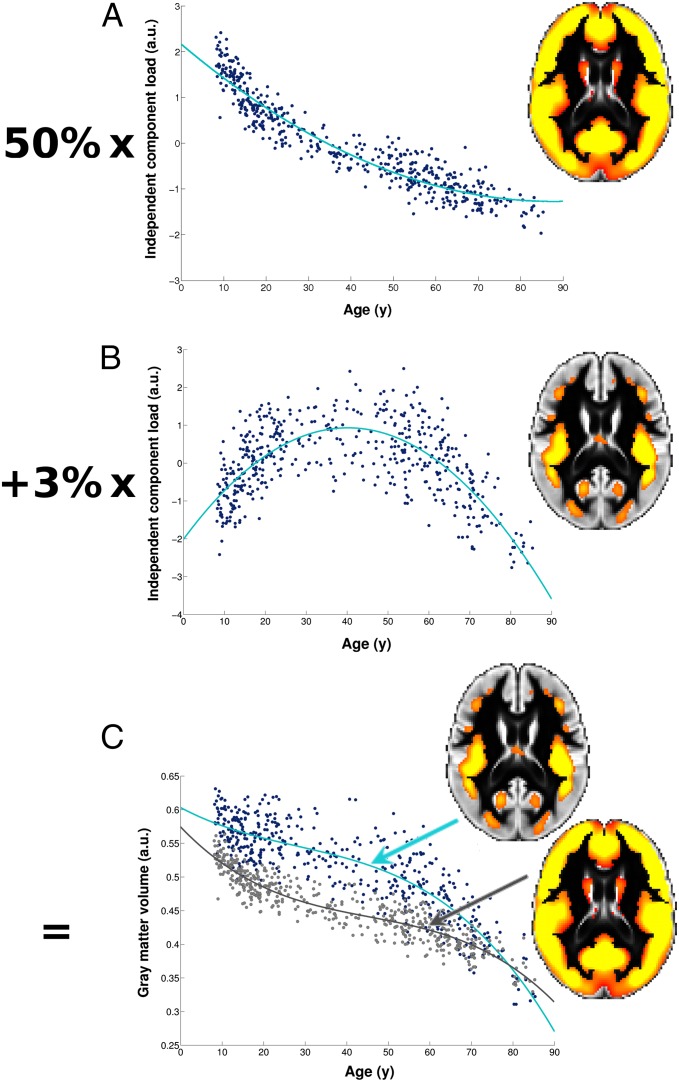Fig. 3.
Regions of the inverted-U network develop relatively slowly during adolescence but present accelerated age-related degeneration at an old age. In the ICA approach, the gray matter volume relationship with age at each voxel is explained by a weighted combination of all ICA components contributing to that voxel. (A) A widespread component including most of the gray matter explains 50% of the structural variation in the images (IC1). (B) The component of interest (IC4) explains 3% of the structural variation across images. (C) The relationship with age in the “core” of the inverted-U network of IC4 (as defined here for visual interpretation by using a threshold of Z > 4; B) is therefore explained by a combination of A and B, meaning that there is an additional effect on top of the dominant pattern of monotonic decrease in whole gray matter volume with increasing age as seen in IC1. As a result, compared with the whole of the gray matter (gray line in C), regions of the inverted-U network of IC4 (turquoise line in C) develop relatively slowly during adolescence and young adulthood (the turquoise line shows a less steep slope than the gray line) but also show accelerated age-related degeneration at old age (the turquoise line shows a steeper slope than the gray line). a.u., arbitrary unit.

